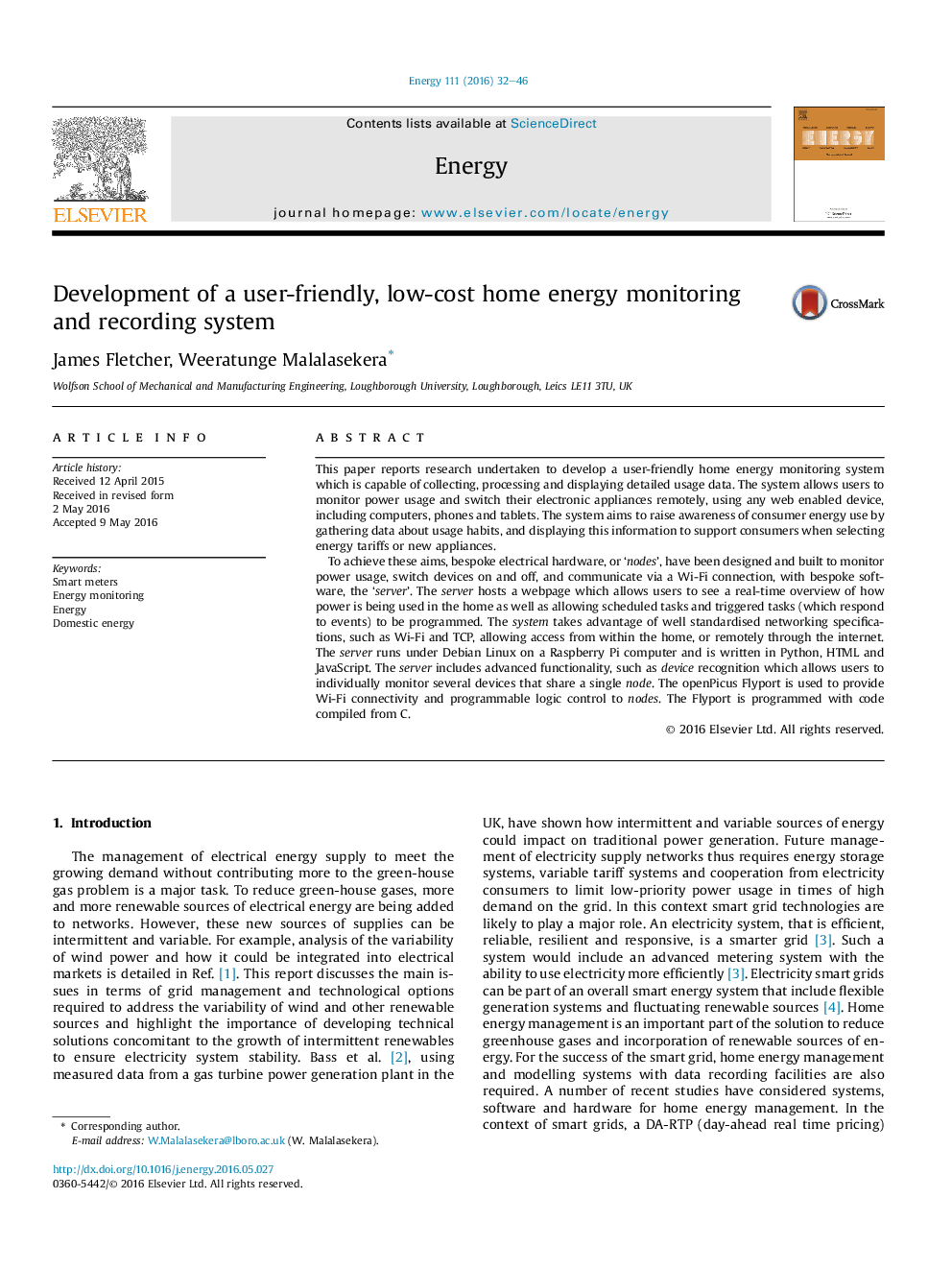| Article ID | Journal | Published Year | Pages | File Type |
|---|---|---|---|---|
| 8073182 | Energy | 2016 | 15 Pages |
Abstract
To achieve these aims, bespoke electrical hardware, or 'nodes', have been designed and built to monitor power usage, switch devices on and off, and communicate via a Wi-Fi connection, with bespoke software, the 'server'. The server hosts a webpage which allows users to see a real-time overview of how power is being used in the home as well as allowing scheduled tasks and triggered tasks (which respond to events) to be programmed. The system takes advantage of well standardised networking specifications, such as Wi-Fi and TCP, allowing access from within the home, or remotely through the internet. The server runs under Debian Linux on a Raspberry Pi computer and is written in Python, HTML and JavaScript. The server includes advanced functionality, such as device recognition which allows users to individually monitor several devices that share a single node. The openPicus Flyport is used to provide Wi-Fi connectivity and programmable logic control to nodes. The Flyport is programmed with code compiled from C.
Related Topics
Physical Sciences and Engineering
Energy
Energy (General)
Authors
James Fletcher, Weeratunge Malalasekera,
